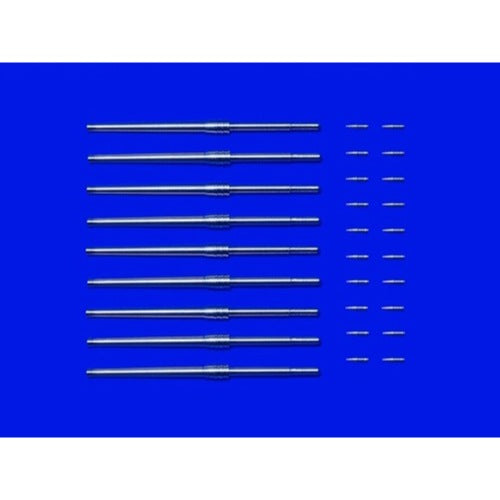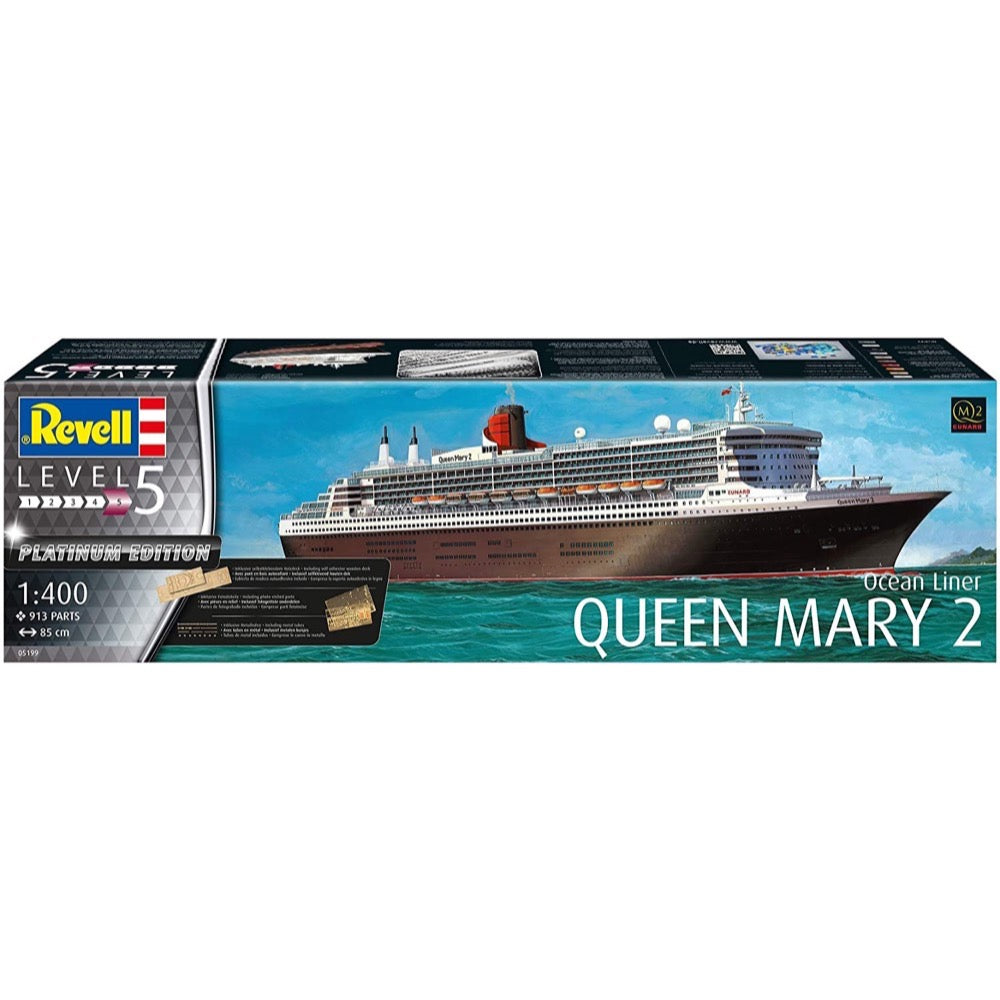
Revell 05199 1/400 Ocean Liner Queen Mary 2 (Platinum Edition)
196.00
$
<p>Model kit of the impressive Queen Mary 2, a cruise ship of superlatives. The ship offers luxury on 345 meters of length for more than 2,500 passengers.</p>
<h3>Features</h3>
<ul>
<li>
<p>Including photo etched parts, metal parts and self-adhesive wooden deck.</p>
</li>
<li>
<p>Rotating engine nacelles</p>
</li>
<li>
<p>Folding stabilizers</p>
</li>
<li>
<p>Detailed swimming pools</p>
</li>
<li>
<p>Structured main deck</p>
</li>
<li>
<p>bridge superstructure</p>
</li>
<li>
<p>Reproduction of tennis courts</p>
</li>
<li>
<p>transparent parts</p>
</li>
<li>
<p>Filigree railings</p>
</li>
<li>
<p>Excursion and lifeboats</p>
</li>
<li>
<p>display stand</p>
</li>
<li>
<p>Extensive decals</p>
</li>
</ul>
<h3>Scope of delivery</h3>
<ul>
<li>
<p>Plastic model kit (not assembled)</p>
</li>
<li>
<p>Building instructions</p>
</li>
<li>
<p>Decals</p>
</li>
<li>
<p>Photo-etched parts</p>
</li>
<li>
<p>Metal tubes</p>
</li>
<li>
<p>Self-adhesive wooden deck</p>
</li>
</ul>
<h3>Specifications</h3>
<ul>
<li>
<p>Age: 13+</p>
</li>
<li>
<p>Number of parts:913</p>
</li>
<li>
<p>Length:850 mm</p>
</li>
<li>
<p>Width:102 mm</p>
</li>
</ul>
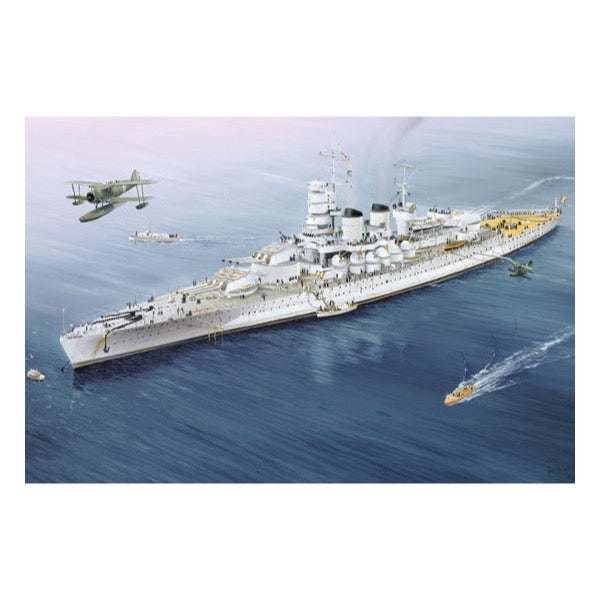
Trumpeter 05779 1/700 Italian Navy RN Vittirio Veneto 1940
27.00
$
<p> The largest and most powerful warships ever built in Italy, the battleships of the Littorio class, were the first “35,000 tonners” to come under the provisions of the Washington Treaty. Although the Washington Navel Conference of 1922 gave Italy the authority to build up to 182,800 tons of new capital ships (including 70,000 tons prior to 1932), the Italians waited more than a decade before beginning construction. </p>
<p> Commissioned on 24 June 1940, she joined the 1st Navel Squadron at Taranto under Admiral Bergamini’s flag. She was severely damaged 10-11 November 1940 while anchored at Taranto by British Aircraft launched from the carrier Illustrious. In March of 1941 she was back in service. 17 December 1941 the RN Littorio participated in the First battle of Sirte Gulf. 21 March 1942 during the Second battle of Sirte, a muzzle blast from the aft 381-mm turret set fire to a Ro.43 floatplane on the fantail which led the British to believe they had scored a torpedo hit on the battleship. </p>
<p> Battle of mid-June 12-16 June 1942 the RN Littorio was damaged 15 June 1942 by American B-24 bombers on the return to her base she was hit by a torpedo launched by the Wellington. Repairs were completed by 27 August 1942 but the ship was to carry out no more combat missions. From December 1942 to June 1943 the RN Littorio was used to defend the cities of Taranto, La Spezia and Genoa from Allied air attacks. </p>
<p> 25 July 1943 the RN Littorio was renamed the Italia. She was decommissioned 1 June 1948 after a total of 46 missions during her wartime career of which nine were combat missions. </p>
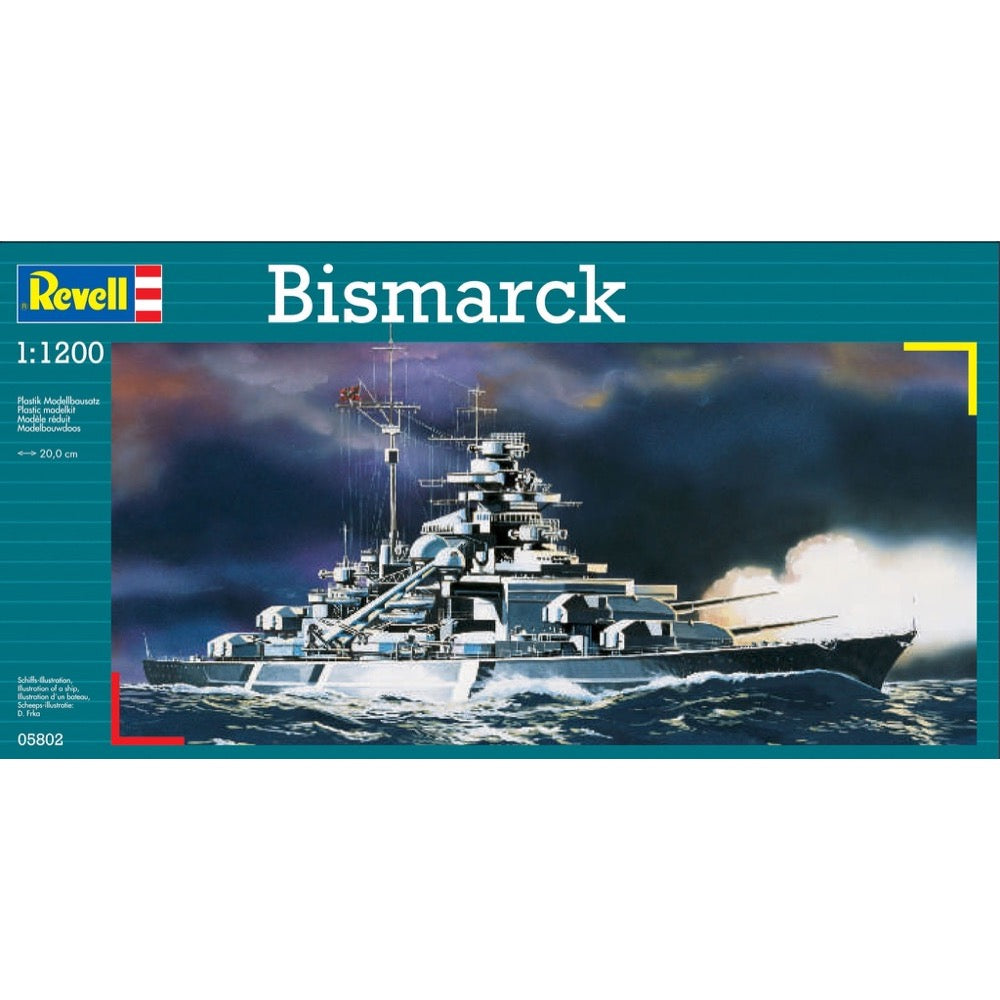
Revell 05802 1/1200 Bismarck
10.00
$
<p>Bismarck went on two major overseas cruises, the first in late 1878 to late 1880, which saw the ship visit South American ports and patrol the Central Pacific, where Germany had economic interests but no formal colonies at that time. During this cruise, she interfered with Samoan internal affairs and protected German interests in South America during the War of the Pacific. <br></p>
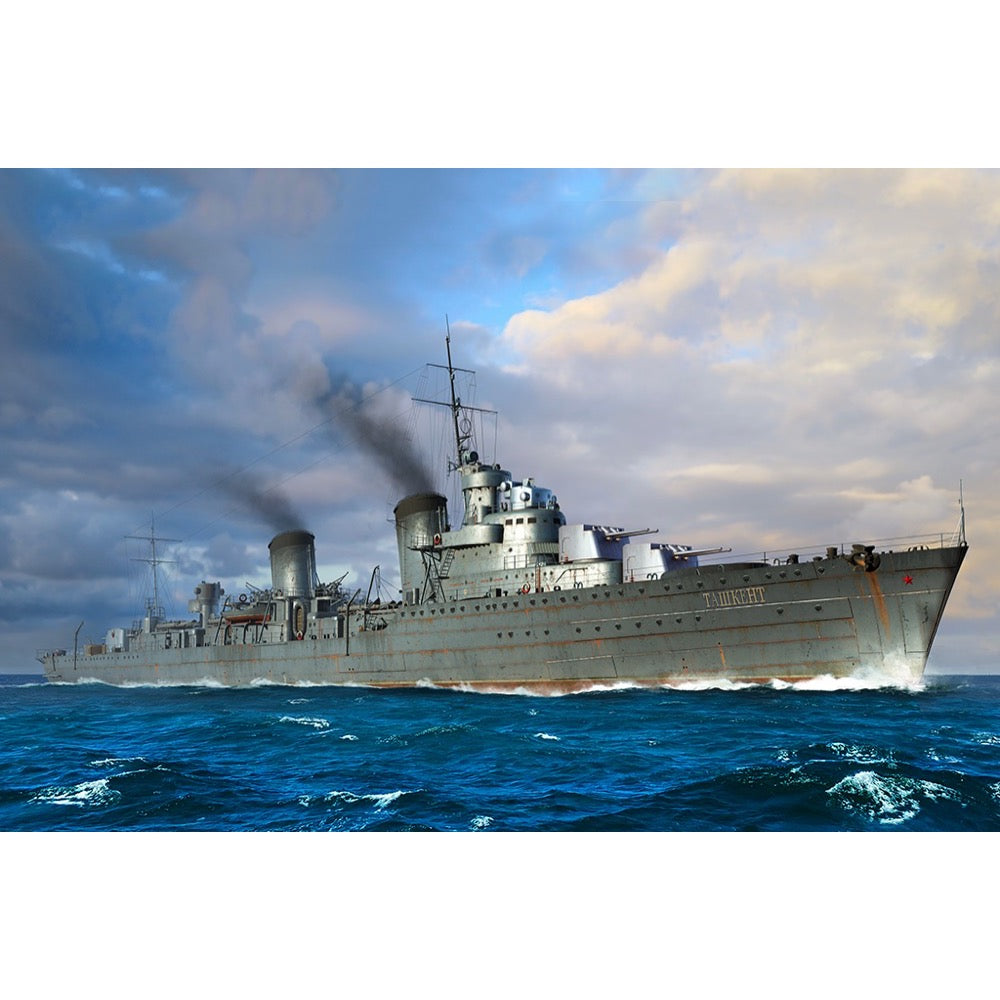
Trumpeter 06747 1/700 Russian Destroyer Taszkient 1942
20.00
$
<p>Taszkient lead destroyer on January 11, 1935 start of construction in Italy, November 28, 1937 launch, October 22, 1939 the Soviet Union to receive service. Taszkient design avant-garde at the time was an exception, it is one of the few speed can exceed 40 knots large ships during World War II, after the 1942 reform, even up to the light cruiser firepower level.</p>
<p>During World War II, as her main task is to transport people and goods to ship. In Sevastopol transport supplies to Soviet ships, the "Taszkient" was quite legendary, even the Germans know its name, it is surrounded by the Soviets before and after the delivery of supplies to dozens of times, during the German air force was air strikes more than 90 times, the Germans dropped bombs on it to a total of more than 400, a torpedo 10, but it only suffered a proximity bomb.</p>
<p>After the withdrawal of Taszkient Novorossiysk naval base, during an air raid on July 2 in the boat was completely destroyed in the stage, salvaged in 1944, because there was no repair value demolished in 1945.</p>
<h3>Features</h3>
<ul>
<li>Hull made from multi-directional slide moulds.<br>
</li>
<li>Deck wood pattern finely rendered<br>
</li>
<li>Contains engraved name plate<br>
</li>
<li>Photo-Etched parts included</li>
</ul>
<h3>Specifications</h3>
<ul>
<li>Model Brief: Length: 199.6mm Beam: 19.6mm<br>
</li>
<li>Total Parts: 110+<br>
</li>
<li>Photo Etched Parts: 1 piece<br>
</li>
<li>Total Sprues: 4 sprues , hull and deck</li>
</ul>
<!---->
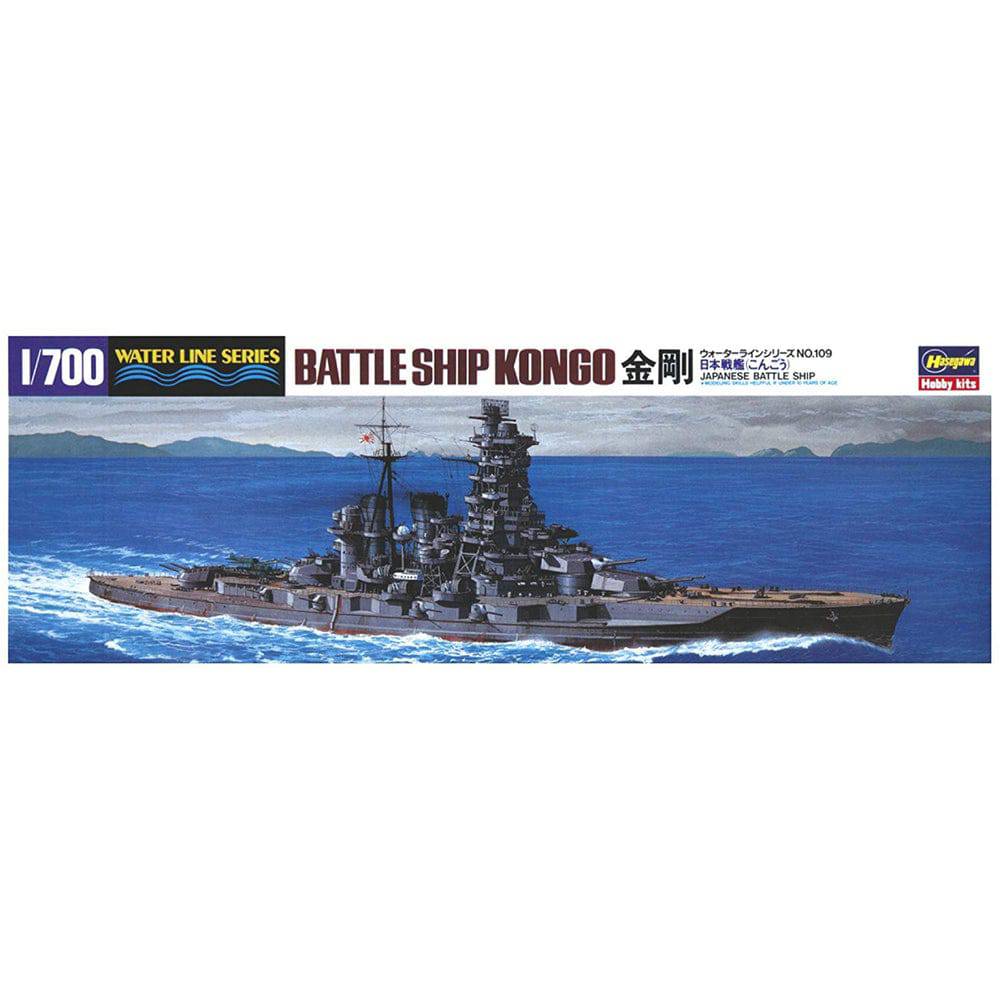
Hasegawa H49109 1/700 IJN Battleship Kongo
19.00
$
<p>Congo was a Japanese cruiser under which the keel was laid in 1911, launched in May 1912, and commissioned in the Japanese Imperial Navy in August 1913. The total length of the ship was 222 m, width 31 m, and full buoyancy - 36 600 tons. The maximum speed of the Kongo line cruiser hovered around 30 nodes. The main armament at the time of launching was 8 guns caliber 356 mm in four towers, two cannons, and additional weapons are primarily 8 guns caliber 152 mm.</p>
<p>Congo was the first of four linear cruisers with this name - ie Kongo. The unit was founded in the British shipyard Vickers in Barrows-in-Furness. The grounded Congo modernizations took place in the period 1929-1931 and 1935-1937, when the ship's powerhouse was completely changed, the superstructures were extended, the anticluse shield was improved and the catapults for seaplanes were added. During the Second World War, Kongo took part in the Battle of Midway (June 1942), but played a marginal role there. In the last months of 1942, he took part in the fighting in the Guadalcanal area, including shooting American positions on the island. In 1944 he fought in the Battle of Leyte, where he contributed significantly to the sinking of the USS Gambler Bay escort carrier. Congo was sunk on November 21, 1944.</p>
<h3>Features</h3>
<ul>
<li>Accurate Scale Model </li>
<li>Highly Detailed model kit</li>
<li>Detailed Instructions Provided</li>
</ul>
<h3>Includes</h3>
<ul>
<li>
<p>Plastic sprue, Decalsheet (waterslide)</p>
</li>
</ul>
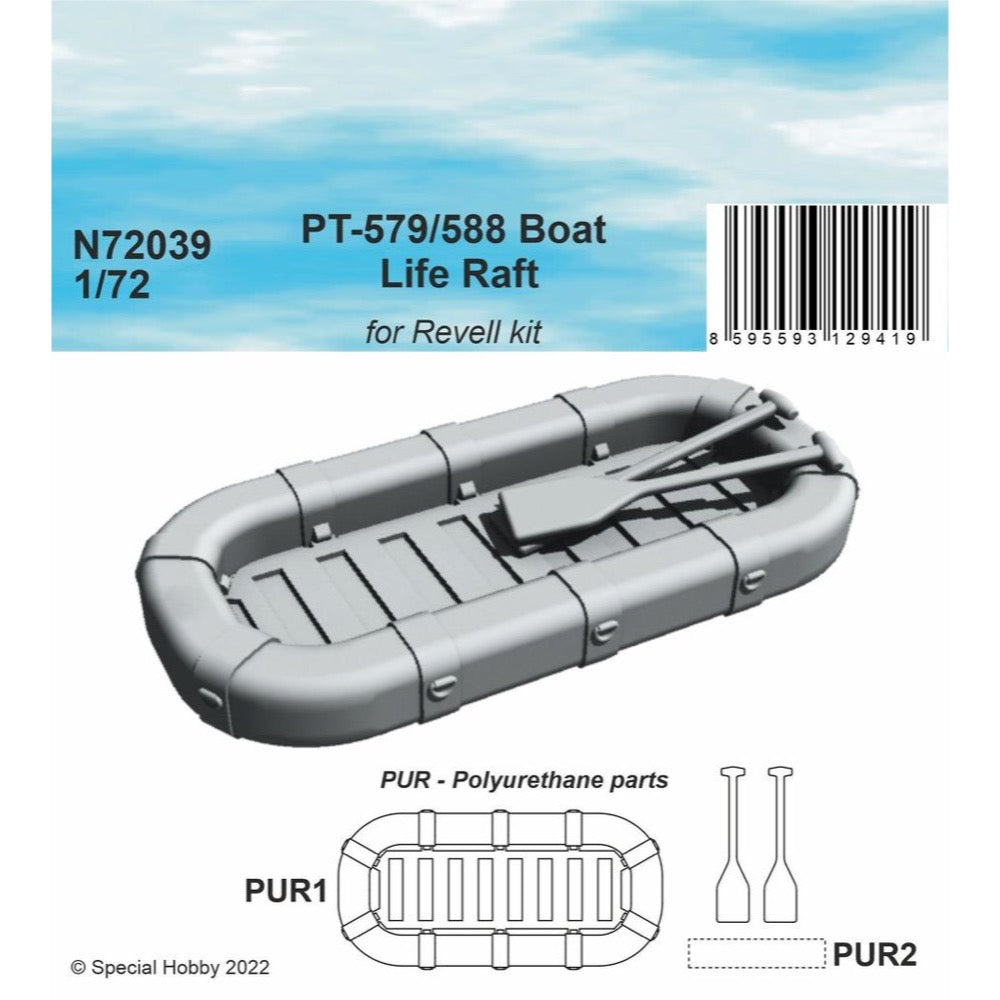
Special Hobby N72039 1/72 PT-579/588 Boat Life Raft
6.00
$
<h3>PT-579/588 Boat Life Raft 1/72</h3>
<p>Resin cast life raft with better details thoughout, surpassing the original Revell kit item.</p>
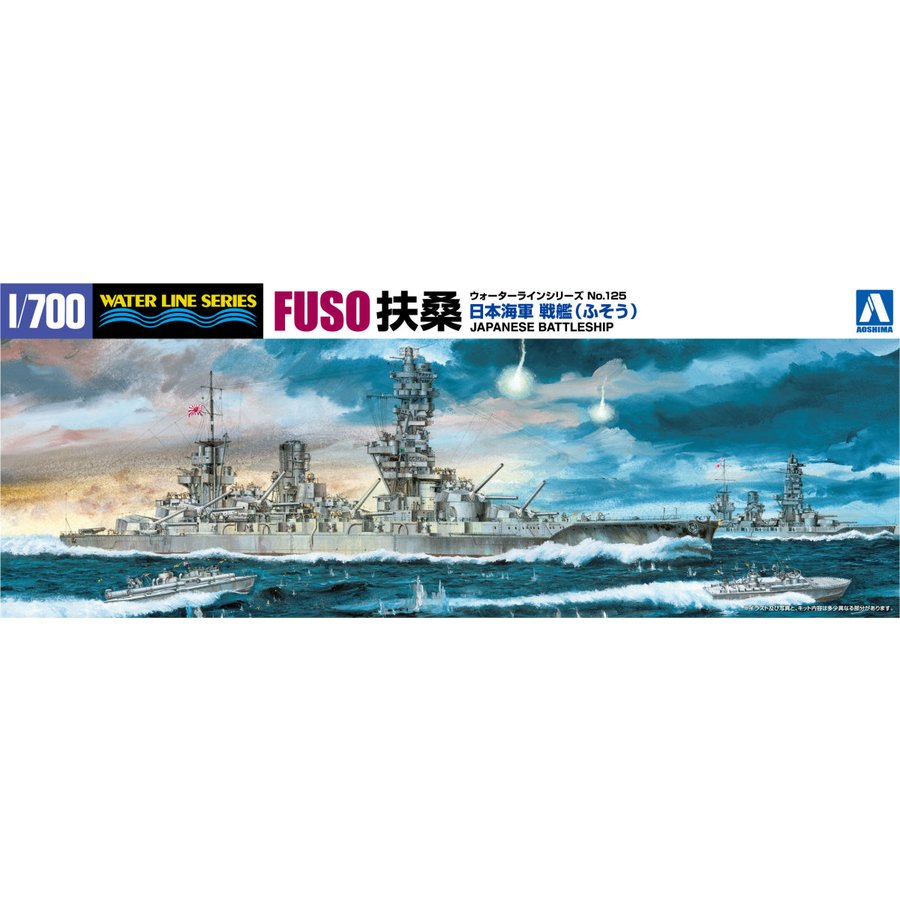
Aoshima A005538 1/700 I.J.N. Battleship Fuso 1944 Retake
22.00
$
<p>Fuso was a Japanese battleship laid under the keel in 1912, launched in March 1914, and commissioned in the Imperial Japanese Navy in November 1915. The ship was 205 m long, 30.6 m wide, and had a full displacement of 39,000 tons. The maximum speed of battleship Fuso was around 22 knots, and after upgrades it reached 25 knots. The main armament was 12 356 mm guns in six turrets, two guns each, and the secondary armament was mainly 16 152 mm guns.</p>
<p>Fuso, along with sister Yamashiro, formed the class of battleships of the same name. During World War I, Fuso was not subjected to major modernization, while in the interwar period it underwent a thorough reconstruction: the hull was lengthened by almost 8 m, the entire engine room was changed, the shape of the superstructure with the command bridge was changed, which reached over 40 m in height and resembled its shape. Japanese pagoda. Fuso's combat career did not begin until World War II, although it was considered rather obsolete by then. The battleship indirectly took part in the attack on Pearl Harbor (December 1941) and played only auxiliary functions in this operation. In May 1942 he fought in the area of the Aleutian Islands, which was a diversion against the action at Midway. From 1943 to 1944, it was stationed primarily on its home islands, but took part in the Battle of Surigao on October 25, 1944, where it was sunk in a torpedo attack.</p>
<p>Aoshima's detailed kit of the IJN battleship Fuso builds into a waterline model of the 1944 "retake" version of the ship. Includes a US Navy PT boat in the same scale to give it a hard time!</p>
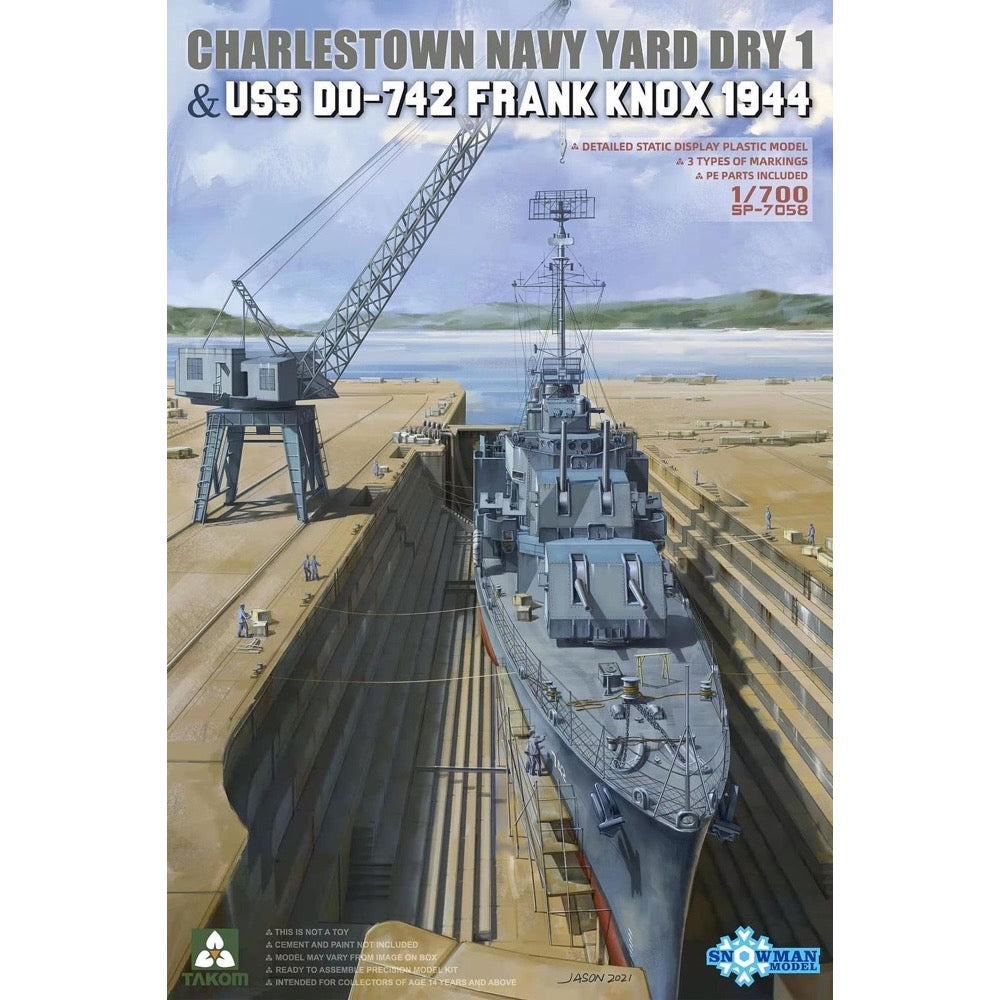
Takom SP7058 1/700 Charlestown Navy Yard Dry Dock 1 and USS DD-742 Frank Knox 1944
28.00
$
<p>The USS Frank Knox DD-742 is the 13th Gearing-class destroyer, commissioned in 1944. After she left the U.S. Navy in 1971, she transferred to the Greek Navy; her name was changed to Themistocles D-210, and was active until 1992.</p>
<h3>Features</h3>
<ul>
<li>
<p>Photo-etched parts</p>
</li>
<li>
<p>Decals for three versions</p>
</li>
</ul>
<h3>Specifications</h3>
<ul>
<li>
<p>Item Size: 30.2cm x 20.2cm x 5.1cm</p>
</li>
</ul>
<p> </p>
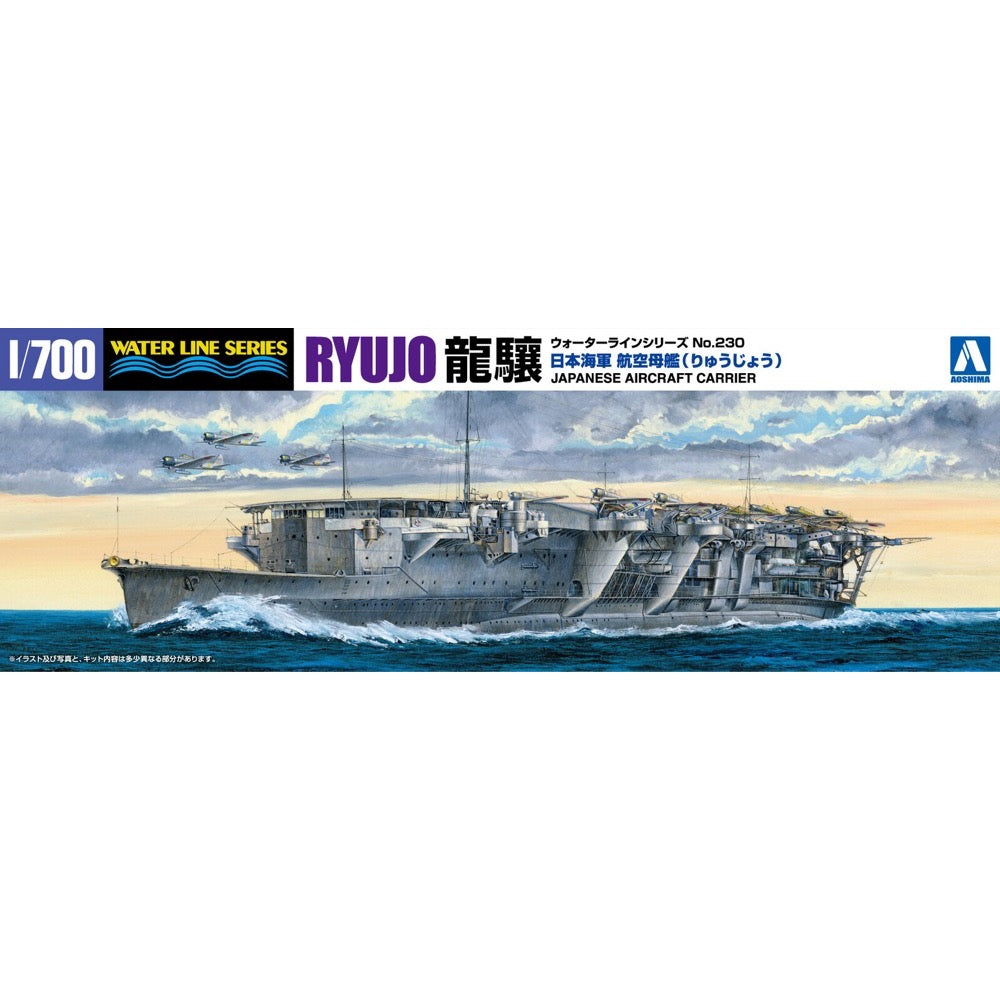
Aoshima A001239 1/700 I.J.N Aircraft Carrier Ryujo 2nd Upgrade Battle Solonsea Battle Of The Eastern Solomons
25.00
$
<p>The Ryujo was a light aircraft carrier of the IJN during the early 1930s. She was small and lightly built in an attempt to exploit a loophole in the Washington Naval Treaty of 1922 which stated that carriers under 10,000t displacement were not regarded as "aircraft carriers." She had her first refit after the "Tomozuru incident," followed by the second refit to incorporate the lessons learned from the "Fourth Fleet Incident."</p>
<p>This model kit recreates the version of the ship from the second refit, built as a water line model. Parts are molded in grey plastic, and decals are included.</p>

Very Fire VF350921 1/350 USS Birmingham
79.00
$
<h3>Very Fire VF350921 U.S. Navy Light Cruiser USS Birmingham CL-62 1/350</h3>
<p>Launched in 1941 and in 1942, commissioned in 1943, and incorporated into the Atlantic Fleet to support the Sicilian landing operation (Operation Husky). In August of the same year, he was transferred to the Pacific Fleet, fought on the Pacific front, and participated in the Battle of Leyte Gulf in 1944. I participated in the Battle of Okinawa from March 1945, but it was damaged, and I returned to Pearl Harbor for repairs and returned on August 1, just before the end of the war. Birmingham is a warship that has survived the war despite being damaged many times, and after the war, it was awarded eight service stars in recognition of its military service.</p>
<p>This kit is an injection full hull model that has a powerful large scale and delicate details. Etching and decals are included.</p>
<h3>Contents<br>
</h3>
<ul>
<li>Plastic sprue (Light gray), Rope (Black), Decalsheet (waterslide) (Multi-colored), Instructions (Paper) (Black & white)</li>
</ul>


